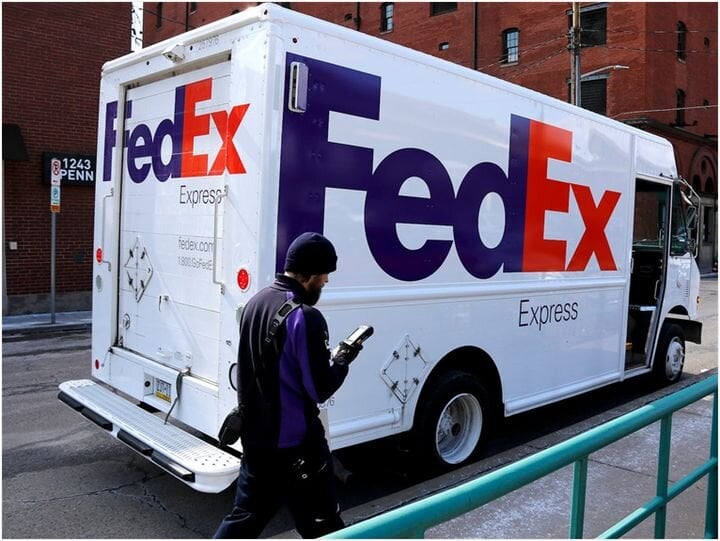![FedEx truck [Source: BusinessInsider ]](https://fabbaloo.com/wp-content/uploads/2020/05/image-asset_img_5eb08c06929f7.jpg)
Charles Goulding and Preeti Sulibhavi determine ways in which 3D printing could help with recent hikes in shipping rates by FedEx and UPS.
United Parcel Service (UPS) and Fed Ex Corp. have both announced US$24 Fees on packages weighing over 50 lbs effective for the 2020 year.
The changes went into effect at UPS on December 29, 2019. FedEx will implement the new rates beginning on January 6, 2020. This essentially means that a 50 lb parcel, shipped over one thousand miles using UPS Ground services, could cost more than US$70 dollars under the new rates. This is a significant increase compared to US$48 under the previous pricing regime. The difference adds up. Companies, if they are not planning now, will need to plan accordingly.
Shipware LLC, a shipping consulting firm, estimates that 14.5% of the packages sent by its largest 100 customers will be impacted by this rate increase. Previously, the threshold for increased fees was 70 lbs. This adds an alarming, hundreds-of-thousands or even millions of dollars to shipping costs for many companies. 3D printing offers multiple potential solutions to address the new fee increases.
Package Weight Reduction
3D printing technologies often provide product weight reduction capabilities, particularly when alternative materials are used. In Fabbaloo’s recent piece about 3D Printer Kits, the issue is cleverly addressed.
Initially, the 3D printer kits that were delivered were comprised of many pieces and required extensive assembly. The packages were also bulkier. Now, to simplify assembly the kits are segmented into two or here large pieces for shipment, thereby reducing shipping costs as well. Win, win.
New Materials
A wide variety of new materials are increasingly being made available to the 3D printing community. Although some of these new materials may be more expensive, avoiding the shipping fee increase may offset the material cost while providing the customer with a better product.
Product Geometry Optimization
3D printing processes and new materials enable a product designer and manufacturer to create new structures that can integrate previously incompatible components into one component, thereby eliminating the need for fasteners and connectors. This can offer substantial weight reduction as well.
Packaging Material Reduction
The new fee increase comes a time when Amazon and sustainability advocates are pushing for packaging material reduction. 3D printing can be used for alternative packaging solutions that improve both sustainability and the bottom line for companies.
All of the 3D printing weight-reducing solutions presented above require innovation. Innovation initiatives are typically eligible for R&D tax credits.
The Research & Development Tax Credit
Enacted in 1981, the now permanent Federal Research and Development (R&D) Tax Credit allows a credit that typically ranges from 4%-7% of eligible spending for new and improved products and processes. Qualified research must meet the following four criteria:
-
Must be technological in nature
-
Must be a component of the taxpayer’s business
-
Must represent R&D in the experimental sense and generally includes all such costs related to the development or improvement of a product or process
-
Must eliminate uncertainty through a process of experimentation that considers one or more alternatives
Eligible costs include US employee wages, cost of supplies consumed in the R&D process, cost of pre-production testing, US contract research expenses, and certain costs associated with developing a patent.
On December 18, 2015, President Obama signed the PATH Act, making the R&D Tax Credit permanent. Since 2016, the R&D credit can be used to offset Alternative Minimum Tax (AMT) or companies with revenue below $50MM and, startup businesses can obtain up to $250,000 per year in cash rebates that can be applied directly to payroll taxes.
Arriving at the Right Destination
![UPS [Source: Bizj ]](https://fabbaloo.com/wp-content/uploads/2020/05/image-asset_img_5eb08c06ec4af.jpg)
The 3D printing industry has the potential to turn a new business challenge for many companies into a new business opportunity for the 3D printing industry itself. UPS and FedEx also benefit from weight reduction because their automated packaging process equipment works much more efficiently with standard-size packages, weighing less than 50 lbs. It’s how the shipment will most efficiently arrive at the right destination.

